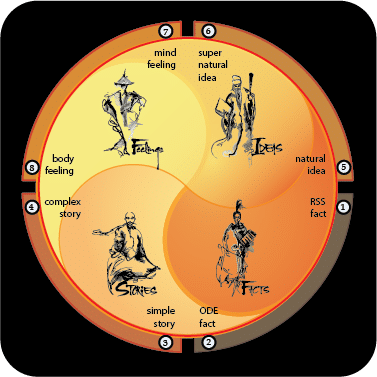What’s more important, what can be explained or what cannot?
Thank you so much for asking me what is surely one of the more intriguing questions I’ve been sent lately. Hopefully the little drawing I’ve included below will be of some help here.
Imagine that this square (the outer boundary of the drawing) contains all you could ever know about a certain subject. Say this subject is which career you should choose, and you’re trying to choose from a set of four you think you’d like.
Now imagine the bottom half of this square contains all the knowledge you can picture about these four careers (the personally visual parts of your knowledge about them; what you can explain about why you’re considering them). Next, imagine that all that you could know, but currently haven’t learned to picture (the personally invisible parts of your knowledge about these four careers; what you can’t explain about why you’re considering them), is contained in the upper half of this square.
Now consider the ways people could answer your question.
Some might say “what you can explain; what is visible to you” is more important, in that there isn’t much to be gained from efforts to see things you cannot see. This belief forms the basis for both the Material sciences and the Empirical sciences. Here, what’s considered real is “what you can see, even if you can’t personally sense or explain it.”
Others might say “what you can’t explain, but know is there; what’s invisible to you” is more important, as this invisible half might contain some fatal flaw or hidden treasure which, if left out, may lead to serious unhappiness. This belief forms the basis for the Rational sciences and the Intuitive sciences. Here, what’s considered important is “what you can personally sense, even if you can’t explain it.”
In truth, both answers are right, but only half right (no pun intended).
Great natural scientists, and great artists, are great in that they draw from both halves equally, thereby creating the natural balance which we humans see as the essence of visual beauty and the underlying quality in all truly spiritual endeavors. Thus if you’re looking to create elegant solutions to world problems, or inspiring art which draws people to look more deeply into life, both are equally important.
